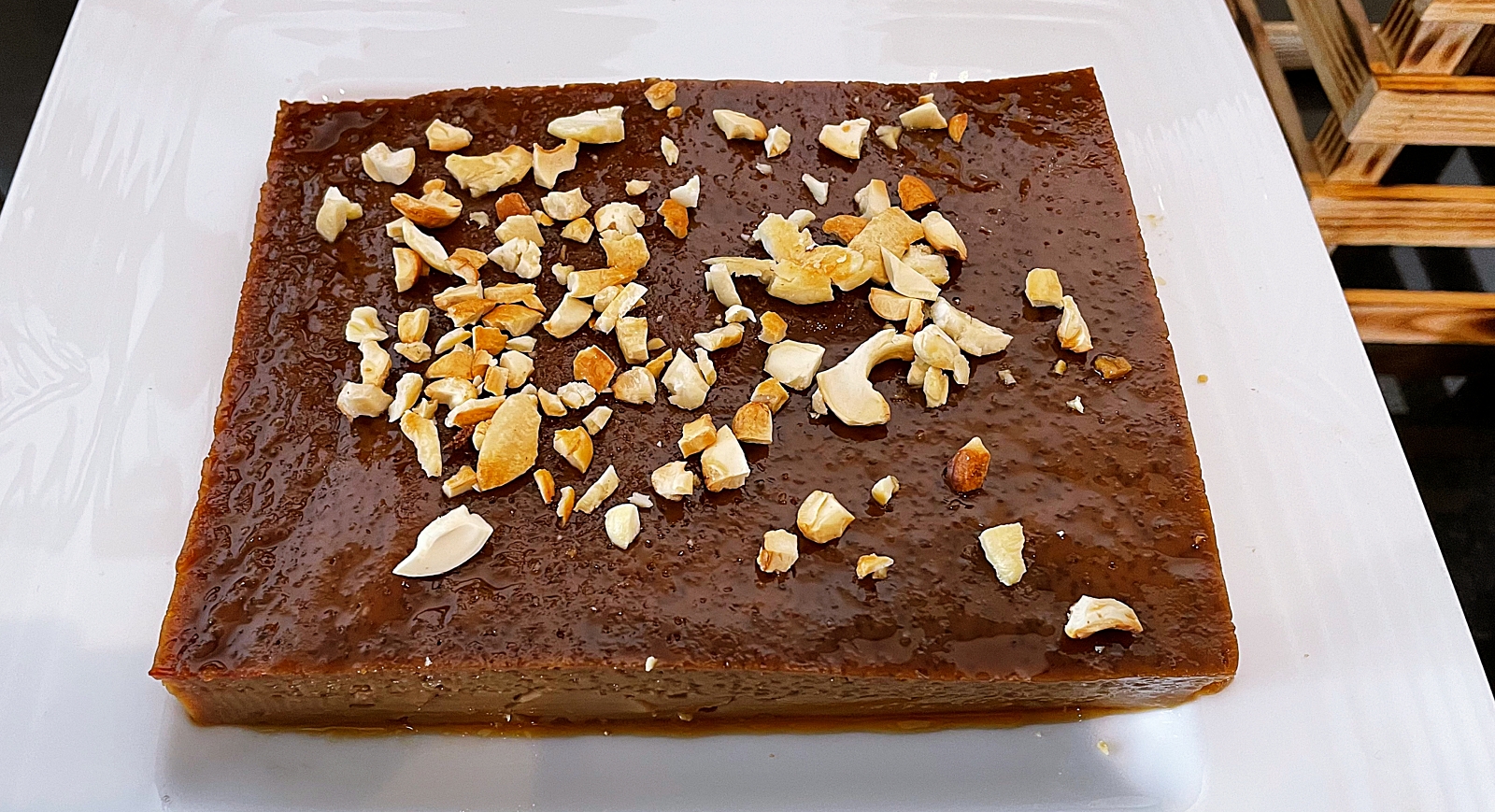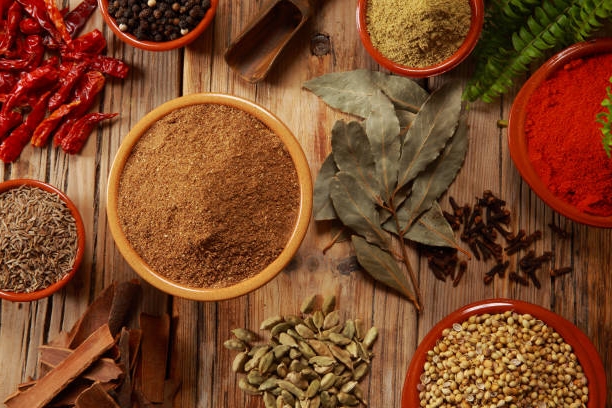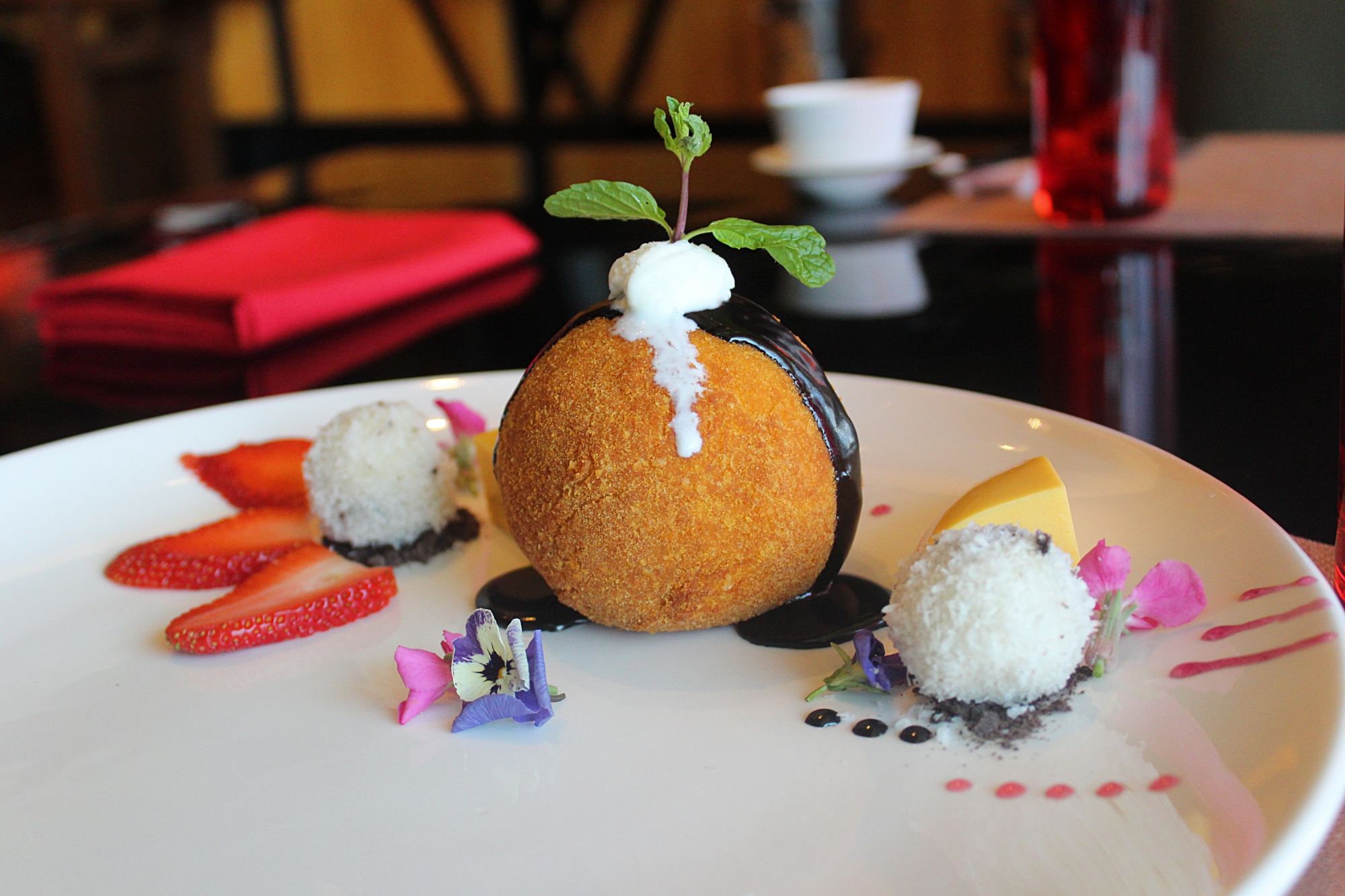Wattalappam: A Tropical Sri Lankan Custard Pudding
Wattalappam, in its most basic form, is a coconut custard dessert cooked with coconut milk or condensed milk, jaggery, cashew nuts, eggs, and other spices.
Sri Lanka, which in Tamil means “that which glitters,” is a tiny island with the shape of a teardrop on the edge of the Indian Ocean beneath India. It is a country full of contrasts, and Sri Lankan cuisine is just as elusive. Although the cuisine is steadily gaining popularity globally, Sri Lankan food has intricate roots and uses many different ingredients. They illustrate the numerous different cultures, histories, tastes, and ideas that have collided to produce a cuisine that is unique but challenging to pin down. The 18th century saw the introduction of custard pudding to the island by Sri Lankan Malays, roused by their addiction to sweet delight.

Table of Contents
Origins of Wattalappam
During the Dutch occupation, they relocated to the island from Indonesia. Think of the Wattalappam as universal in Sri Lanka. The name is a medley of the Tamil words ‘Vatilla,’ meaning cup, and appam, meaning cake. But what makes a Wattalappam? Wattalappam, in its most basic form, is a coconut custard dessert cooked with coconut milk or condensed milk, jaggery, cashew nuts, eggs, and other spices. My preferred filling is coconut, jaggery, and a dash of cardamom. Cloves, nutmeg, pandan juice or grated vanilla pods can be additional fillers. Regional variations have different names, but they all have the same appearance. What differs is what’s within.
Resembles Serikaya
Apart from eating this pudding, what I like best about it – is that it does not have any fancy folds. However, Tamil people were initially unaware of the dessert. The Malay dish Serikaya, a steaming custard made with eggs, coconut milk, palm sugar, and pandan or screwpine leaves, is more likely the source of the dessert’s inspiration. The two dishes’ resemblance to one another reveals a common origin. It is most likely a Dutch word called Vla, which means custard, that the Moors used as a common name, Vattil-Appan, by phrasing it in Tamil. The dessert is a staple of the traditional Eid-ul-Fitr celebration, which marks the conclusion of Ramadan, and has become closely associated with Sri Lanka’s Muslim minority.
Brown Custard Topped with Nuts
Weddings, religious holidays, and other social gatherings and festivities are other occasions when it is well-liked. A brown custard often topped with nuts characterises the traditional Wattalappam. Years ago, I first saw Wattalappam in a seaside cafe in Kerala. I had almost forgotten about this dessert until I saw it again on the Kingsbury Colombo menu a few years ago. Although the ingredients were familiar with India, the interpretation was different, and we were glad for the difference. Despite having a rather plain appearance, it excels in presentation. Don’t let its appearance fool you, though; the flavour is complex, the texture is soft and silky, and everything melts in the mouth.
Use of Kithul Jaggery
Jaggery has an acquired taste. The Kithul jaggery in this recipe is derived from palms, as opposed to the traditional south Indian jaggery made with cane juice. Palm jaggery generally tastes considerably different from sugar and is a good source of calcium and iron. The ingredients for this recipe are as follows: jaggery, coconut milk, eggs, and spices. The block in the image that appears to be dark brown is kithul jaggery. Grate it with a grater, and the powdered version will appear significantly paler. However, use a grater or knife, or cut it into smaller chunks before pulsing it in a powerful blender, if you have one.
Some people enjoy it plain; however, the most common spices to add are cardamom, cinnamon, cloves, and nutmeg. In this dish, freshly ground spices are typically used, and a little goes a long way. The good news is that you can use any Asian jaggery, piloncillo, panela, or dark brown sugar in the scarcity of Kithul jaggery. This is the closest I could get to the classic homemade recipe. Just steam or bake the custard after mixing all the ingredients. The following are the steps to making a Wattalappam.
-
Melt the jaggery with some water or coconut milk.
-
Blend in the eggs.
-
Blend herbs with coconut milk.
-
Pour into the vases
-
Bake or steam until set
A Springy Pudding
Wattalappam is a springy pudding found throughout Sri Lanka’s dessert hierarchy. But the main trouble with this recipe is getting the custard to be smooth. Therefore, it’s crucial to strain the custard before pouring it into the ready moulds. You can use canned coconut milk or freshly squeezed coconut milk; this recipe will take around 3/4 of a coconut. For this recipe, use the initial extraction of fresh coconut milk. The homemade version is often, steamed, but the baked versions are simpler to make and are a touch firmer.
Wattalappam tastes fabulous whether it is baked or steamed. Although it can be served warm, the taste develops and mellows after it cools. It is decorated with a surfeit of nuts and dry fruits, and its syrup oozes delectably from it. Wattalappam, which represents many cultures, customs, and rituals, is simply an extension of a dessert that Sri Lankans consume every day. Its allure stems from its adaptability; whether it carries coconut or jaggery. Simply put, this is a dessert for the heart.



